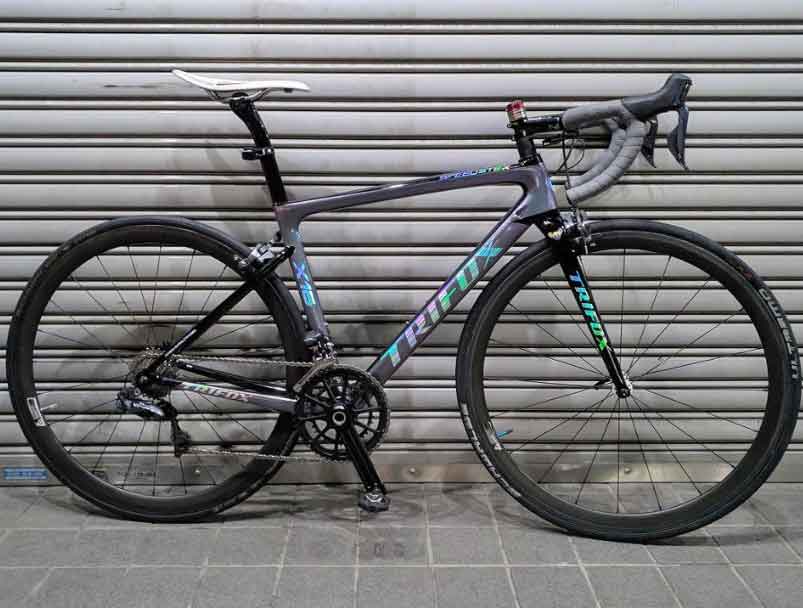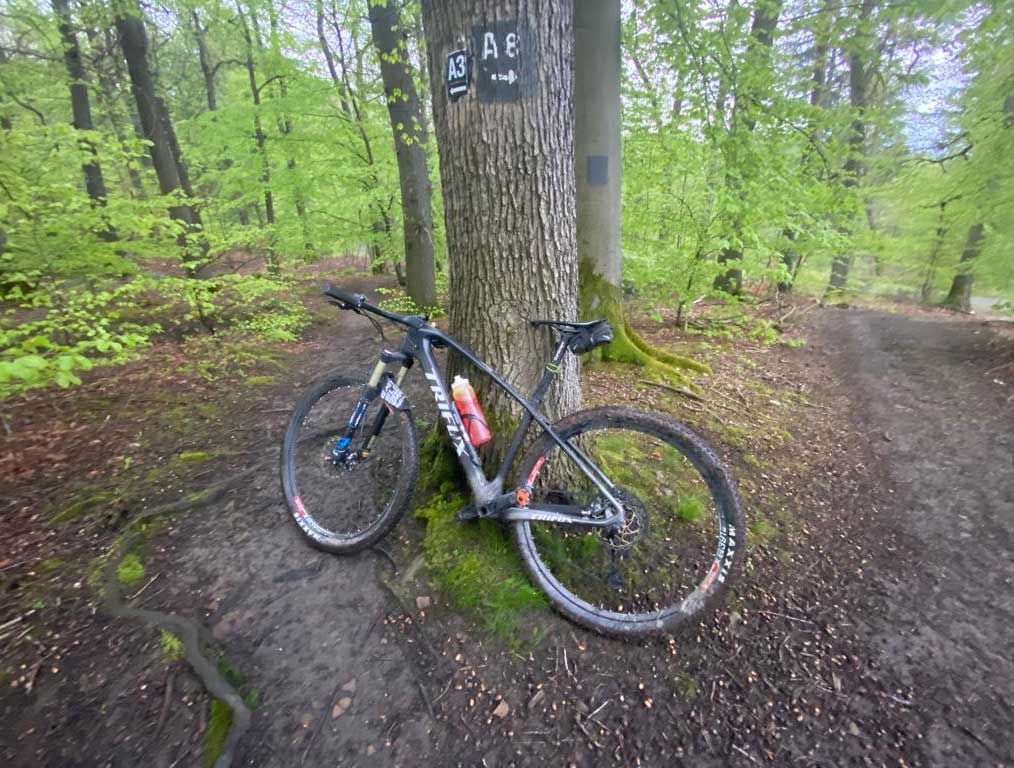
For avid mountain bikers, finding the right frame for their bike is crucial for their overall performance and experience on the trails. Unfortunately, high-quality frames often come with steep price tags, which can be discouraging for budget-conscious individuals. That's where the Trifox 29er Carbon MTB Hardtail Frame MFM200 comes in. This frame is known for its durability, stability, and versatility, making it a top choice for those who want an affordable hardtail frame that can hold its own on any trail. 1. Lightweight and durable: One of the biggest perks of the Trifox 29er Carbon MTB Hardtail Frame MFM200 is its lightweight design, which makes it easy to maneuver through technical terrain. The frame is made of high-quality carbon fiber, which not only adds to its lightweight feel but also makes it incredibly durable and long-lasting. Despite being a budget-friendly option, the Trifox frame doesn't sacrifice quality for cost. 2. Versatility: The Trifox 29er Carbon MTB Hardtail Frame MFM200 is incredibly versatile, as it allows you to swap out the quick-release skewer and the thru-axle skewer depending on the style of derailleur hanger you have. This makes the frame compatible with a wide range of other bike components, allowing you to customize your ride to your specific needs. 3. Great for climbing: Another notable advantage of the Trifox 29er Carbon MTB Hardtail Frame MFM200 is its climbing prowess. The frame's steep head angle and short chainstays make climbs feel easier and more efficient, allowing you to tackle tough ascents with ease. 4. Smooth ride: Despite being a hardtail frame, the Trifox 29er Carbon MTB Hardtail Frame MFM200 manages to provide a smooth and comfortable ride. This is thanks to its well-designed geometry, which balances out the stiffness of the carbon fiber frame with ample shock absorption, resulting in a ride that's responsive and enjoyable. 5. Great value: The Trifox 29er Carbon MTB Hardtail Frame MFM200 is a great value, especially when compared to other high-end carbon fiber frames on the market. Not only does it offer excellent performance, but it comes in at a fraction of the cost of some of its competitors. If you're looking for an affordable yet high-quality hardtail frame, the Trifox is definitely worth considering. Conclusion: The Trifox 29er Carbon MTB Hardtail Frame MFM200 is an excellent choice for mountain bikers who want a versatile, durable, and affordable hardtail frame that can handle the toughest terrain. Its lightweight design, versatile skewer options, climbing prowess, smooth ride, and great value make it a standout option in the crowded mountain bike frame market.
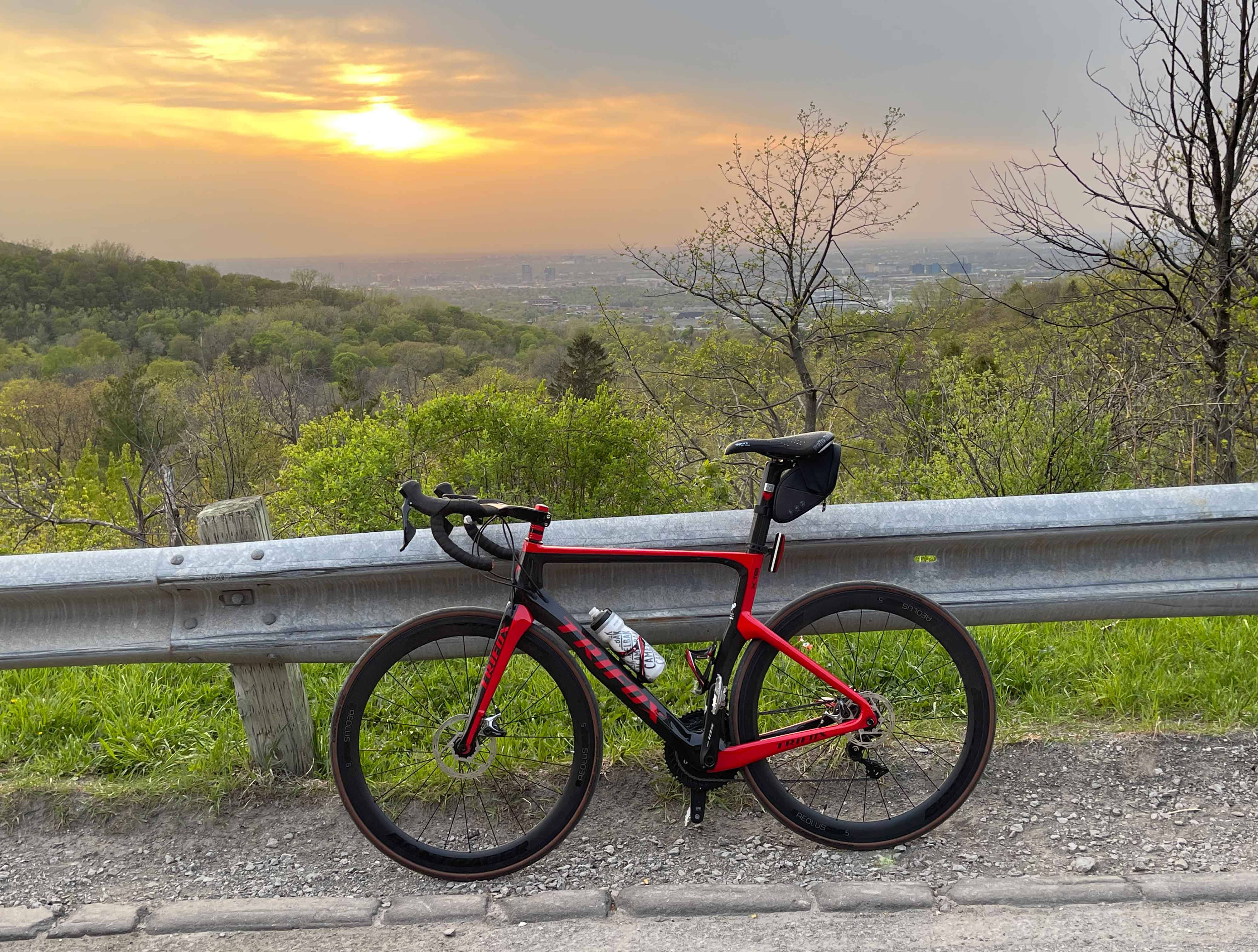
A well-fitting road bike is essential not only for comfort but also for performance and safety. One of the crucial factors in determining the proper fit is the size of the frame. Choosing the right measurement can make a significant difference in your riding experience, especially if you're planning to go long distances. 1. Understand the Frame Size: Before measuring, you need to know the different types of frame sizes that are available. Road bike frames are measured based on the length of the seat tube, which is part of the frame that supports the seat post and saddle. The measurement is usually in centimeters, and it indicates the distance from the center of the bottom bracket to the top of the seat tube, where it meets the top tube. The size typically ranges from 44cm to 66cm and can be labeled as XS, S, M, L, XL, or XXL, depending on the brand. 2. Measure Your Height: The next step is to determine your height accurately. Stand against the wall, take off your shoes, and place a book or a ruler on top of your head. Measure the distance between the floor and the book or ruler, and record the measurement in inches or centimeters. This measurement will help you determine the frame size that best fits you. 3. Use a Size Chart: Once you have your height measurement, you can use a size chart to match it with the appropriate frame size. Most bike manufacturers provide size charts that recommend a frame size according to the rider's height. These charts can vary slightly from brand to brand, so make sure to check the specific manufacturer's website for accurate measurements. 4. Calculate the Standover Height: The standover height is the clearance between the top tube and the ground when you're standing over the bike. It should be at least one to two inches or two to four centimeters for proper maneuvering and safety. To measure this, straddle the bike with both feet flat on the ground and measure the distance between your crotch and the top tube. Make sure you're wearing the shoes you plan to ride with during this measurement. 5. Test Ride Your Bike: Once you've determined the appropriate frame size, it's time to test ride your bike. A proper test ride should be at least 20 minutes long, and you should wear the same shoes and clothes that you plan to use when cycling. Check for comfort, handling, and overall fit. If the bike doesn't feel right, you may need to adjust the saddle, handlebars, or stem to achieve a more comfortable and efficient riding position. Conclusion: Choosing the right frame size is crucial for an enjoyable and safe cycling experience. Use these steps to measure a road bike frame size by height, and you'll be well on your way to finding the perfect fit. Remember that measurement is not the only factor in finding the right fit, so don't forget to test ride your bike and make necessary adjustments for maximum comfort and performance on the road.
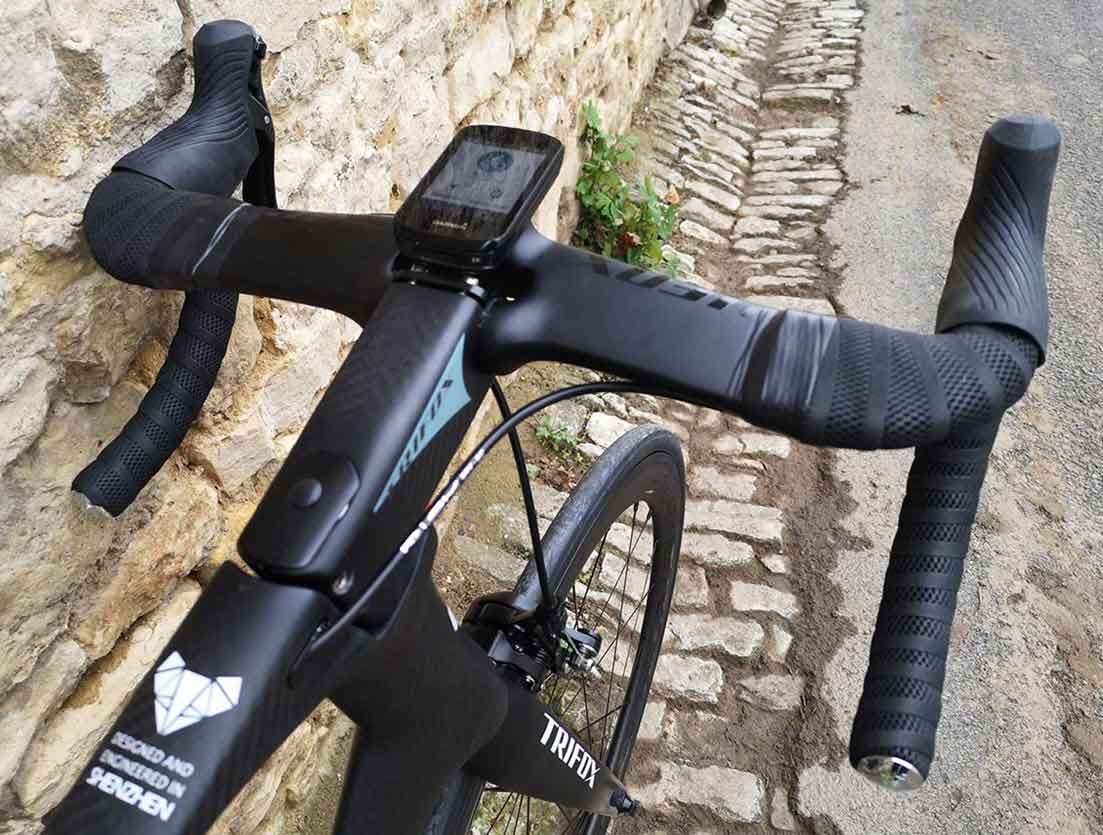
One of the easiest and most effective ways to improve your road bike's performance is by upgrading your handlebars. Aero handlebars, in particular, are designed to reduce drag and improve your aerodynamic position, allowing you to ride faster and more efficiently. Among various types of aero handlebars, carbon road bike handlebars have become increasingly popular due to their lightweight and stiffness. 1. TC20AF Aero Handlebar The TC20AF is a compact road bike drop bar with aerofoil-shaped tops that perfectly complement the latest aero road bikes. The tops feature a new aerofoil shape design, enhancing your bike's aerodynamic properties. Additionally, the handlebars are internally routed to minimize drag and offer a sleek appearance. The cable routing setup is compatible with both manual and electronic gear systems to ensure reliability while riding. Moreover, the handlebar comes with a stopwatch bracket that is perfectly compatible with Garmin and Bryton's stopwatches. This feature enables you to keep track of your time, distance, and speed conveniently while riding. 2. TC20UL Aero Handlebar The TC20UL handlebar is made of carbon fiber, making it lightweight and durable. Its internal cable routing design allows for a clean and organized cockpit, reducing air resistance. The handlebar has a unique design that sinks in the middle and lifts at the ends, improving your riding posture and making long-distance riding comfortable. The AERO uplift breaking wind design of this handlebar ensures maximum streamlined shape, reducing drag and improving aerodynamics. This handlebar is perfect for riders who enjoy road, gravel, and cyclocross riding due to its versatility and unique design. Benefits of Carbon Road Bike Handlebars Carbon fiber has become increasingly popular in the cycling industry due to its lightweight and exceptional stiffness. Carbon road bike handlebars provide riders with a comfortable ride, reducing road vibrations and improving responsiveness. The handlebars are also durable and long-lasting, making them an excellent investment for avid cyclists. How Aero Handlebars Improve Riding Performance Aero handlebars improve your riding performance by enhancing aerodynamics and reducing drag. They allow you to achieve a more aggressive position, reducing wind resistance, and enabling you to achieve greater speeds with less effort. Aero handlebars also improve your bike's stability, making it easier to handle and control. Conclusion: Upgrading your road bike with aero handlebars can have a significant impact on your riding performance. Carbon road bike handlebars offer lightweight, stiffness, and durability, making them an ideal choice for avid cyclists. The TC20AF and TC20UL aero handlebars are great options for riders looking to enhance their bike's aerodynamics and take their cycling experience to the next level. Consider investing in a pair of aero handlebars to add speed and efficiency to your riding.
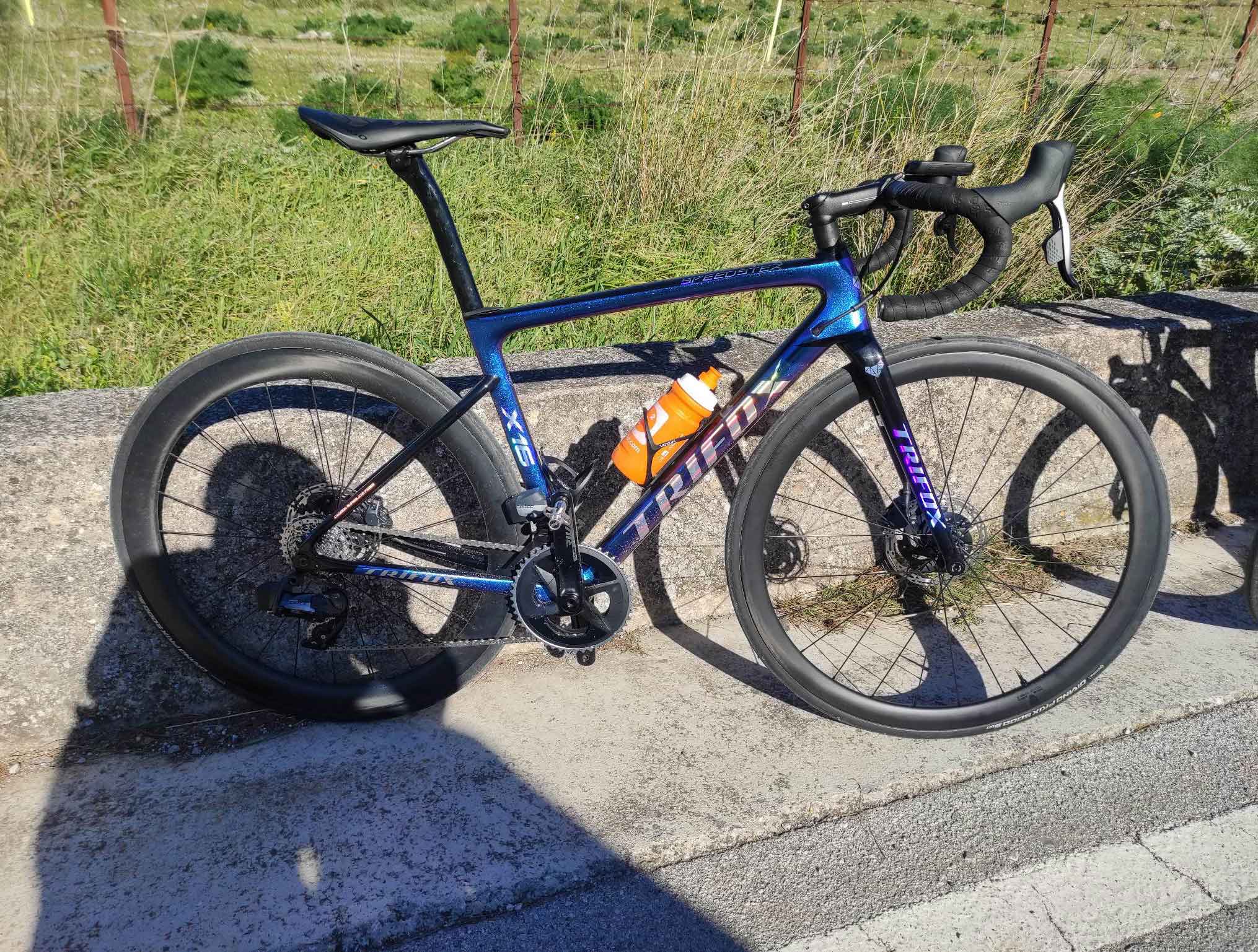
Do you have an old bike lying in your garage that needs some makeover? Painting your bike frame is an excellent way to give your old bike a new look without breaking the bank. Even if you’re new to the painting game, painting a bike frame is an easy and fun DIY project that anyone can do. With just a few tools and some basic knowledge, you can paint your bike frame and get a professional-looking result. 1) Prepare your bike frame: The first and most important step towards painting your bike frame is to prepare it properly. This means removing all the components such as wheels, handlebars, and other bits and pieces. You'll also need to clean the frame thoroughly to remove any dirt, rust, or grease. Use a degreaser to get rid of any stubborn dirt and grime. Afterward, sand down the entire frame with fine-grit sandpaper, and clean it again with a microfiber cloth. 2) Choose the right paint: The next step is to choose the right paint. You can use either spray paints or brush-on paints to paint your bike frame, depending on your preference. Spray paint is quick and easy, but it requires more preparation, whereas brush-on paint is more time-consuming but gives better results. There are many colors and finishes available for bike paints, so choose a color that suits your style and personality. 3) Apply paint to your bike frame: Before applying paint, it's important to cover any parts of your bike frame that you don't want to get paint on. Use masking tape, newspapers, or old rags to cover those areas. Also, make sure to apply paint in thin layers to avoid drips and runs. Work in a well-ventilated area, preferably outdoors, to prevent inhaling fumes. Wait for each coat of paint to dry, and sand it lightly before applying the next layer. Repeat this step until you get the desired finish. 4) Dry and Reassemble: Once you're happy with the results, allow the paint to dry completely. This can take anywhere from 24 to 48 hours, depending on the weather conditions. Once the paint is dry, you can reassemble the bike, but be careful not to scratch the paint. Attach the wheels, handlebars, and other components back onto the bike frame. 5) Finish with a clear coat: The last step is to apply a clear coat to protect your newly painted bike frame. The clear coat gives a glossy finish to your bike and protects the paint from chipping and fading. Again, wait for each layer to dry before applying the next one. Conclusion: Painting your bike frame can be a fun and easy DIY project that can breathe new life into your old bike. With proper preparation, the right tools, and some patience, you can achieve a professional-looking finish that will have your friends marveling at your bike's new look. So, go ahead and try painting your bike frame, and have some fun while you're at it!
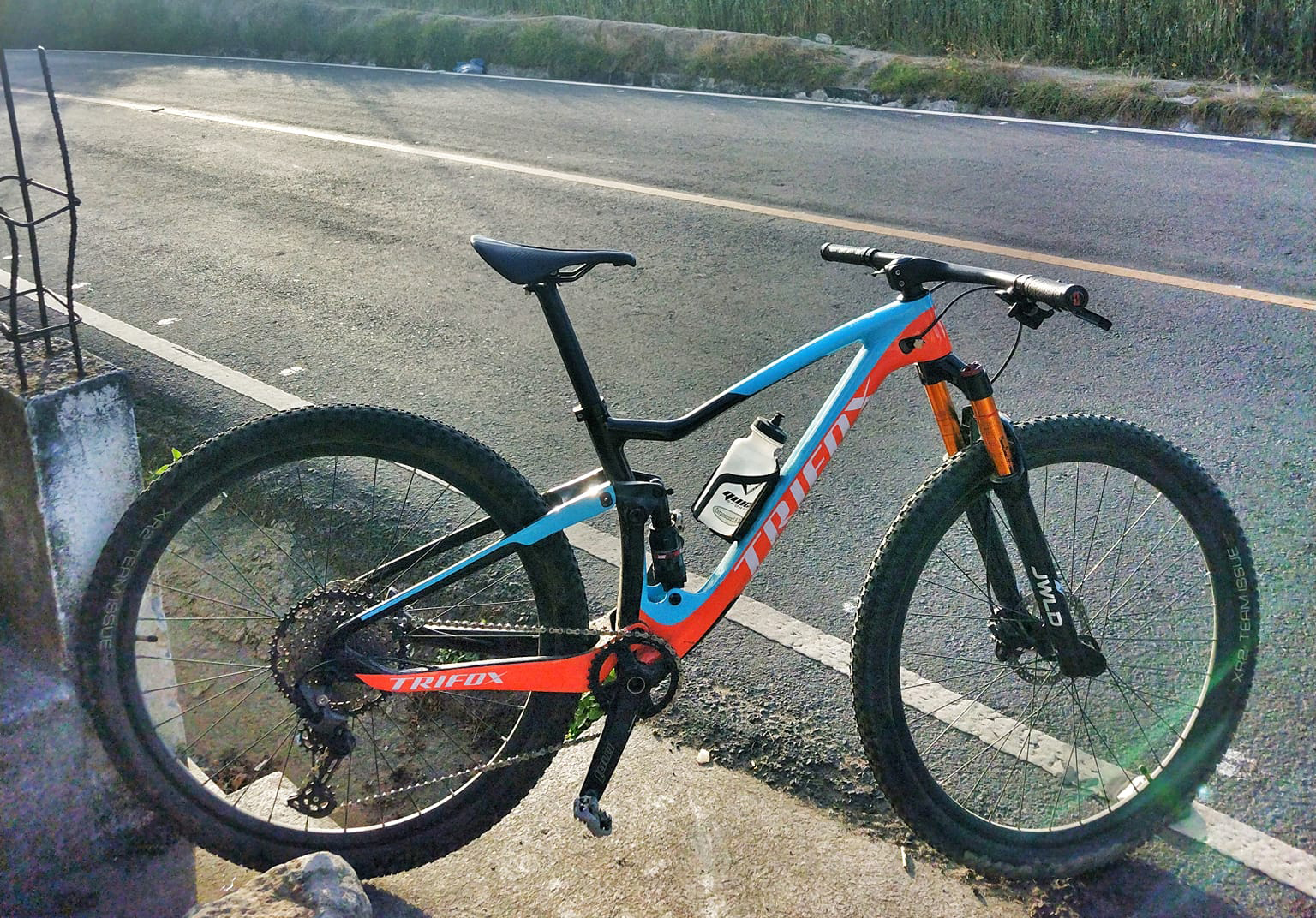
If you're a cycling enthusiast, you know the importance of upgrading your bike components to improve your ride quality. One of the most popular upgrades is converting your quick-release hub to a thru-axle. This is because a thru-axle is significantly stiffer and more secure than a quick-release mechanism. Step 1: Check if Your Hub is Convertible The first step is to check if your hub is convertible. This means that it has the potential to be transformed from a quick-release hub to a thru-axle through the use of an adapter. You can easily find this out by checking your hub's specifications or consulting a bike mechanic. If your bike hub is not convertible, then, unfortunately, you cannot make the switch. Step 2: Choose the Right Adapter If your hub is convertible, the next step is to choose the right adapter. Adapters come in different sizes and lengths, so it's important to select the one that fits your hub and fork. You can find the right adapter by checking your bike manufacturer's website, contacting a bike dealer, or simply browsing online. Step 3: Remove the Quick-Release Parts Once you have the right adapter, you can start removing the quick-release parts from your hub. This should be done carefully, as you don't want to damage any of the components. Unscrew the quick-release skewer, and remove any springs or washers that might be attached to it. Also, remove the end caps of your hub. Step 4: Install the Thru-Axle Adapter With the quick-release parts removed, you can now install the thru-axle adapter. This is done by inserting the adapter into the hub and securing it using bolts or screws. It's important to tighten the bolts or screws properly to ensure that the adapter is securely attached to the hub. Step 5: Install the Thru-Axle Lastly, you can install the thru-axle into the adapter. This is done by simply sliding the thru-axle into the adapter until it locks into place. Tighten the thru-axle securely, and make sure it's properly aligned. Once you're done, you're ready to hit the road with your new and improved bike! Our best selling hubs include these: bike hub M827, bike hub M821 Converting your quick-release hub to a thru-axle may seem daunting, but it's actually a simple process. If you follow the steps we've outlined in this blog, you'll be able to make the switch with ease. Remember, this upgrade will significantly improve your ride quality, so it's definitely worth the effort. Happy upgrading! Please check the product details in detail to get the bike hub you want!
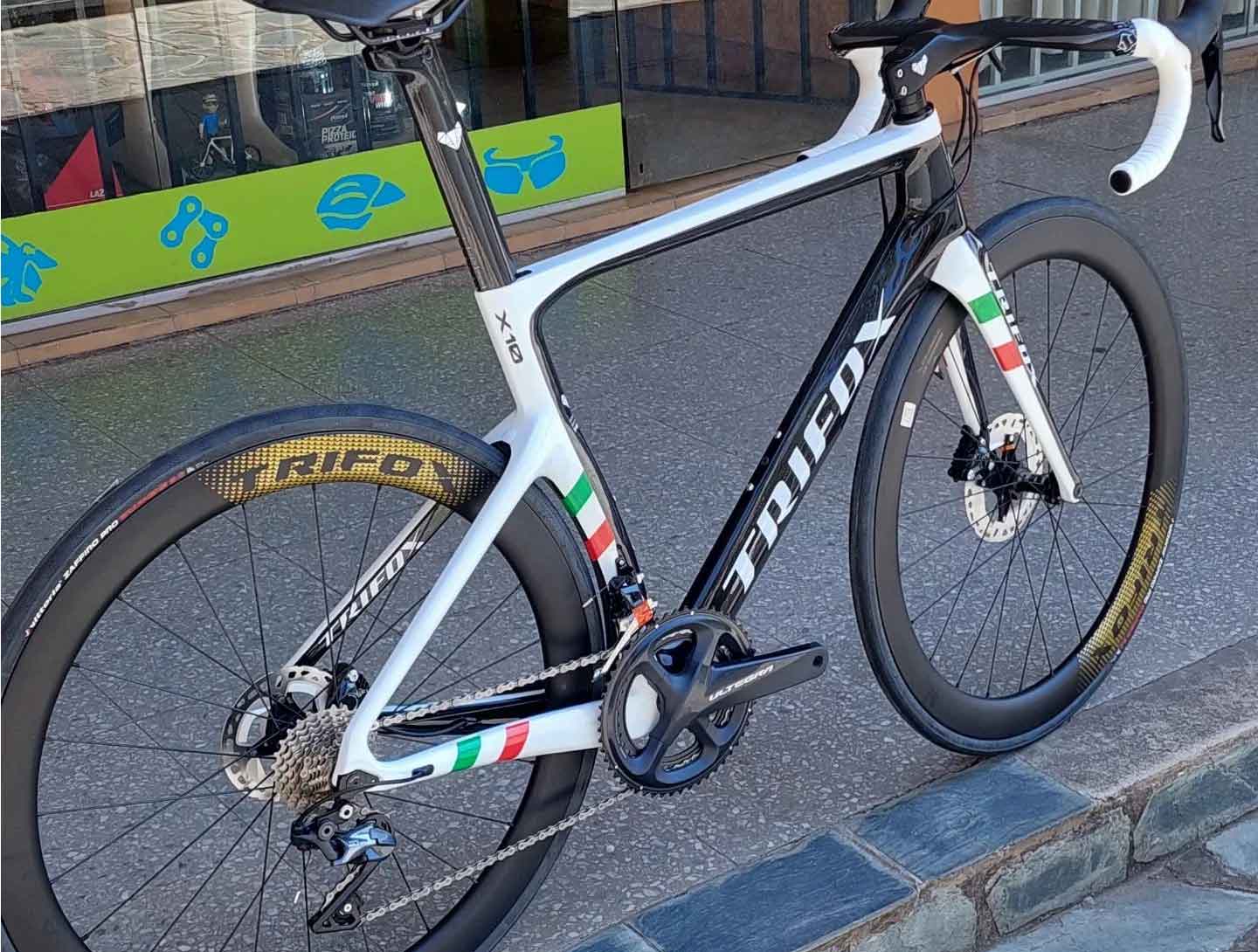
Rim brake wheelset have been the standard for road bikes for years and although disc brakes have slowly taken over, they still hold their ground as a reliable option. But with so many options available, which one should you pick for your bike? What is a Rim Wheel ? A rim wheel is an integral part of a bicycle's structure. It consists of an outer rim, spokes, nipples, and a hub. Rim wheels are responsible for distributing the load across the bike's frame, assisting in movement, and providing a mounting point for tires. For those who like to push their bike's limits, carbon wheelsets are a perfect choice. They're exceptionally lightweight, rigid and provide better aerodynamics than traditional aluminum wheels. And if you're specifically looking for carbon wheelsets with a rim brake, Trifox Carbon Road Bike Wheelset Quick Release WT17 should be on your list. This wheelset is one of the best rim brake wheelsets available in the market. It has a carbon fiber construction, making it incredibly lightweight and rigid. The rim brake system is suitable for riders who prefer traditional brakes. It features a recommended tire size of 700C X 25C, making it perfect for road cycling. Plus, the rider weight limit of 100kg is an added bonus. The brake system is a crucial aspect of a wheelset. It determines how the wheelset performs when you hit the brakes. The Trifox Carbon Road Bike Wheelset Quick Release WT17 uses V-Brakes, which are known for their strong and reliable stopping power. The brake system is easy to install and adjust, ensuring your safety during rides. The recommended tire size for Trifox Carbon Road Bike Wheelset Quick Release WT17 is 700C X 25C. This tire size is perfect for road cycling as it provides excellent traction while maintaining high speeds. You can also use larger tires, but it's recommended to stick to 25C for optimum performance. Choosing the right rim brake wheelset can significantly impact your cycling experience. The Trifox Carbon Road Bike Wheelset Quick Release WT17 is an excellent option to consider if you want to enhance your rides. It's lightweight, durable, and perfect for road cycling. Understanding what factors to consider when selecting a wheelset can make a huge difference in your cycling performance and comfort. So, choose wisely and happy riding!
Hubs need to match the frame or fork they are used in. The spacing of a frame/fork is measured from the inside surfaces of the dropouts, where they come into contact with the locknuts of the bike wheel's axle. Halo Dropout spacing Halo Hub O.L.D. The Flange spacing is measured from the outside face of the locknuts (or equivalent), this is commonly called the "O.L.D." (Over-Lock-nut Dimension)
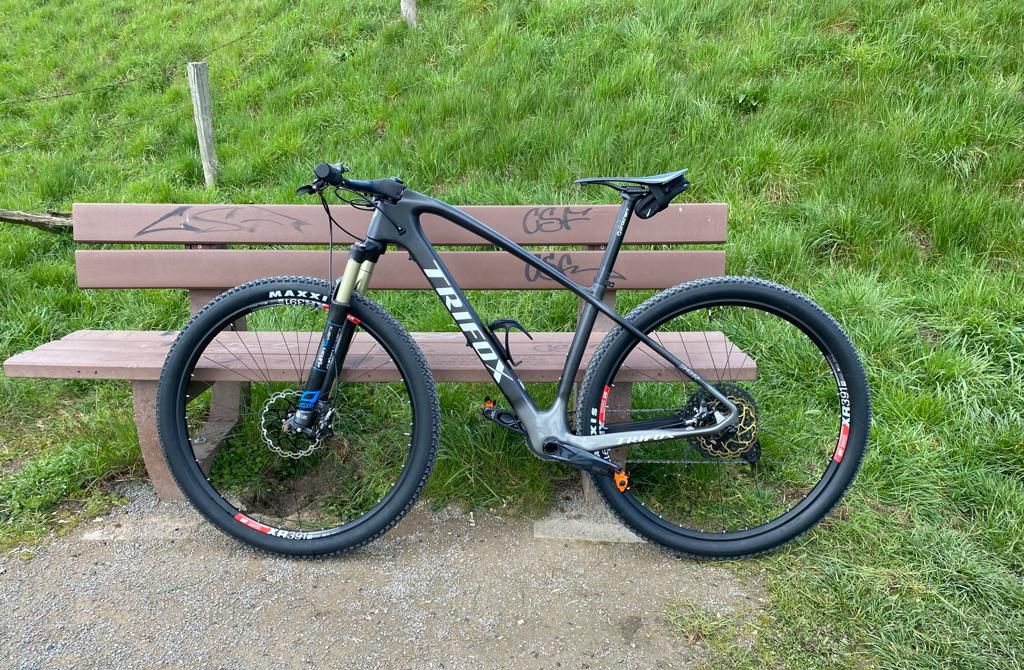
Measuring your mountain bike frame is essential when it comes to determining the correct size for a comfortable and safe ride. A properly sized frame can prevent injuries, improve handling, and enhance your overall mountain biking experience. In this article, we’ll provide you with the step-by-step process on how to measure your mountain bike frame.Step 1: Measure Your HeightStand with your back against a wall and measure your height using a measuring tape or ruler. Make sure to remove your shoes for more accurate results.Step 2: Determine Your Inseam LengthThe inseam length is the distance from the floor to your crotch. Measure this distance while wearing shoes and record the measurement.Step 3: Use Your Height and Inseam Length to Calculate Frame SizeTypically, bike manufacturers provide size charts that recommend the frame size based on your height and inseam length. However, you can also use a simple formula to calculate your frame size manually. Here’s how:Multiply your inseam measurement by 0.67Subtract 3 inches from the resultThe resulting number is your recommended frame sizeFor example, if your inseam length is 30 inches, the calculation would look like this:30 x 0.67 = 20.1 20.1 - 3 = 17.1Therefore, your recommended frame size would be 17.1 inches.Step 4: Check the Standover HeightStandover height refers to the distance between the ground and the top of the bike frame's top tube when the bike is standing upright. To check this measurement, straddle the bike with both feet on the floor and measure the distance between the ground and the top of the top tube. Make sure there is at least an inch of clearance between you and the top tube to ensure a safe and comfortable ride.Step 5: Test Ride the BikeOnce you have calculated the recommended frame size and checked the standover height, it's time to test ride the bike. This step is crucial to determine whether the bike is the correct size for you. Take a short ride and pay attention to how the bike handles and feels. A well-fit bike should feel comfortable to ride and allow for easy handling.ConclusionMeasuring your mountain bike frame may seem like a daunting task at first, but it's essential for a comfortable and safe ride. By following our step-by-step guide, you can ensure that you have a properly sized frame that fits your height, inseam length, and standover height. Remember to test ride the bike to ensure that it feels comfortable and handles well. Happy riding!

Hi everyone, in this video I will ride with my neighbor, just a quick ride about 30-40km - breakfast ride.This ride is to test my new carbon saddle from Trifox brand. Trifox sponsored the saddle for me to do a review.At the end of the video, I will do a review on the carbon saddle. Its been a while doing bike VLOG, let's watch the video.Okay, quick break before we meet a hilly area, just a short climb.I'm with Nazrul with his road bike - Gusto RCA3. I had review it, so I put the link above & below video descriptions.Gusto is a Taiwan brand and it is a value for money bike with a good specs. Okay, let's continue.Okay now we are at a T-junction. To the left, you can go to Ekamatahari & Seremban. To the right, you can reach SIC & KLIA.But we are going to U-turn because it started raining a bit. Will have breakfast at the stall near house area.Actually its a been a while since I ride my bike because I'm focusing on my run training. I had joined KLSCM virtual run.Planning to do a personal best timing for 10km. Lazy to register for 42km marathon.Past few weeks, there has been a lot of accident involving cyclist. Safety first, if you don't feel well, skip cycling for that day.Now for the review after 40km ride. Trifox is a brand from China since year 2008. Thanks Trifox for the sponsorship.Trifox also gave carbon bottle cage & carbon handlebar extender. Design wise, beautiful shape design with carbon look & feel.Here the line is silver/grey color. There are other color options - red, green. White color Trifox name in front & fox logo at the back. Curve inwards at the middle & curve shape at the back as well. Very slim profile design & weight is only 95 gram, very light.Saddle length is 270mm & wide is 140mm. Saddle fit depends on individual. You have to measure own sit bone & do bike fitting.With a good cycling pants & correct riding position, the saddle still okay with a bit hard/firm feeling because no soft padding.So, for short distance below 100km, it is suitable but for long ride over 100km, for me not suitable, not comfortable.On bumpy ride, you have to lift your butt to avoid any stiff feeling. The surface area is smooth so your sitting position sometimes shift a bit.Price is USD 39.99 USD 99.99. Trifox website link at below video descriptions.Here is the Trifox carbon bottle cage. Nice design with white color Trifox name & logo. Weight is only 22gram for this thin version. The other bottle cage given is a thick version which I will put at my folding bike.Easy to put the bottle & bottle is steady & stable.For the carbon handlebar extender, also will install at my folding bike.Okay guys, that's all for this video. Thank you again Trifox for the sponsorship. Do check out Trifox at below links.Comment below, what saddle are you guys using now.Hit the Like Subscribe Bell & Share button.See you in the next video. #enjoythelittlethingsClick here to buy the Trifox carbon saddleCheck the Trifox carbon saddle review video here






